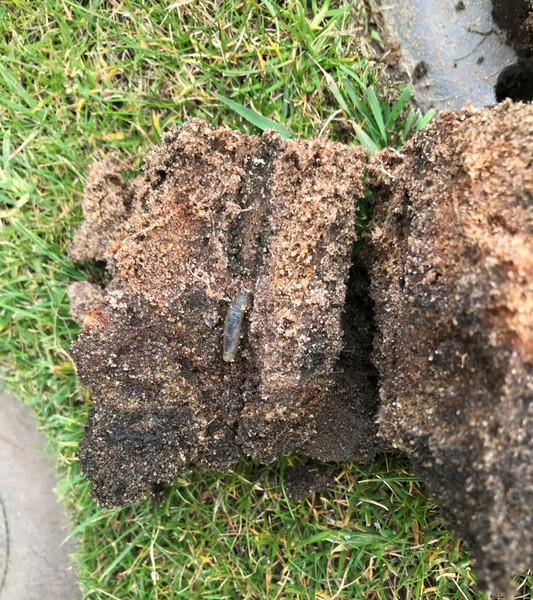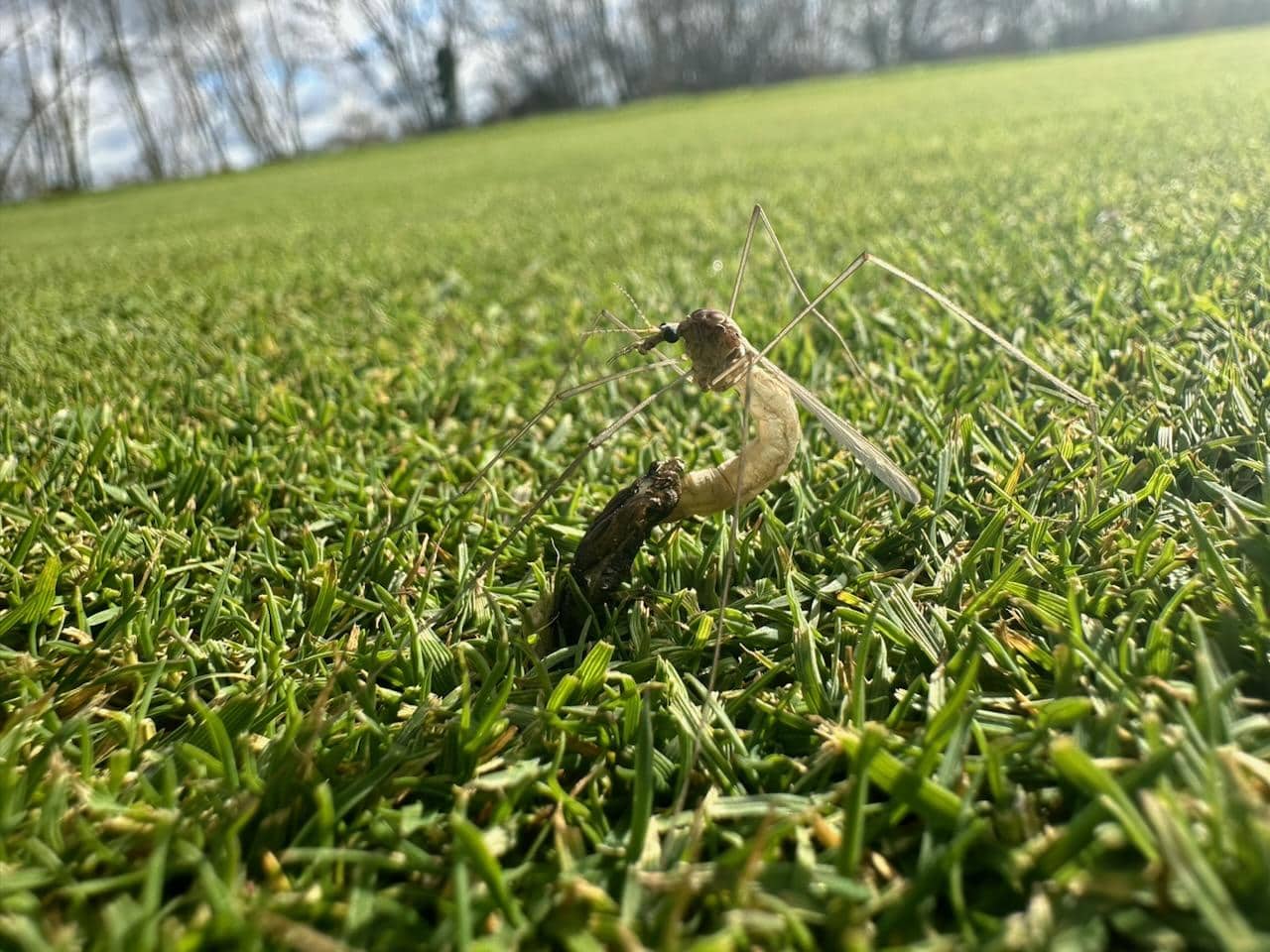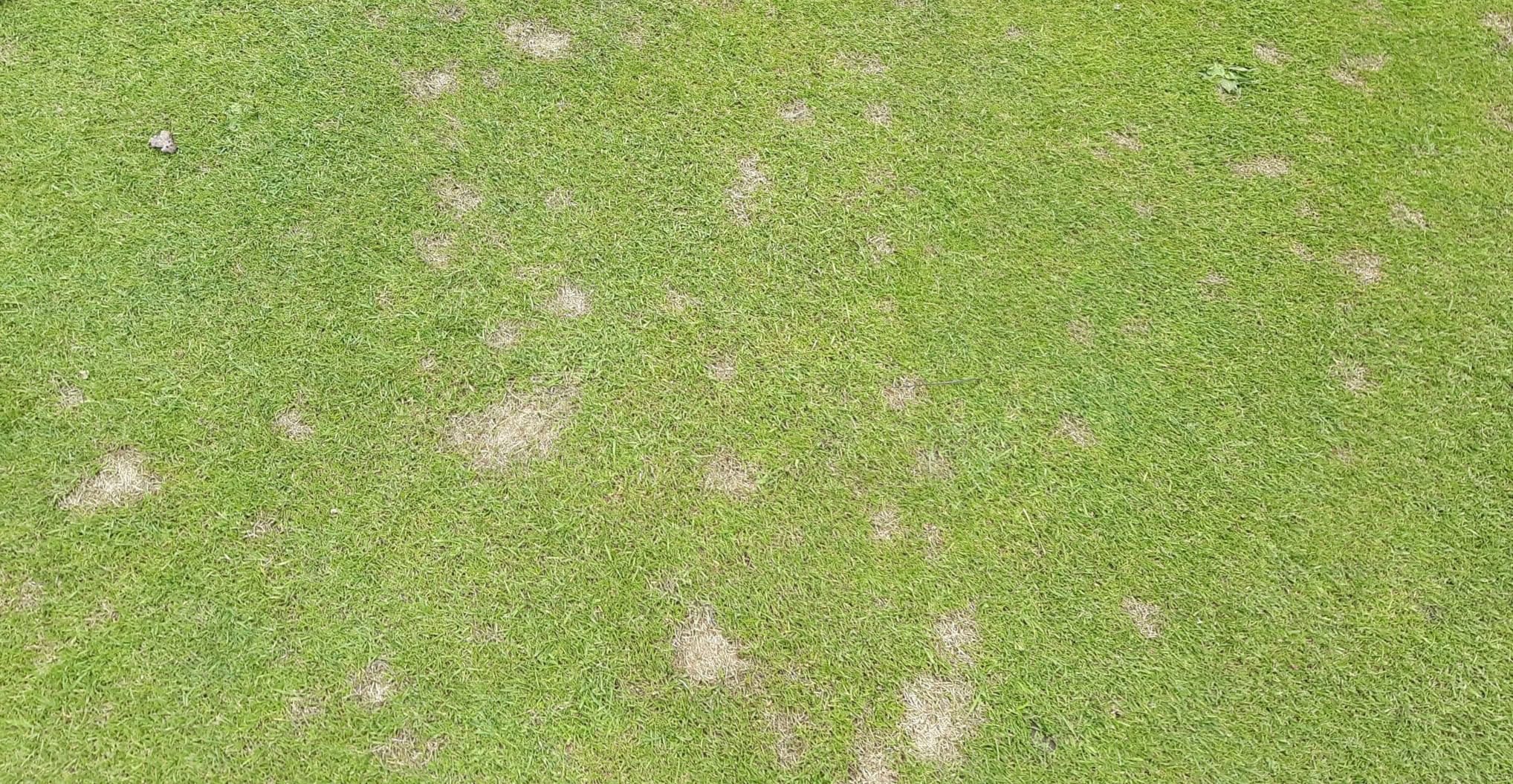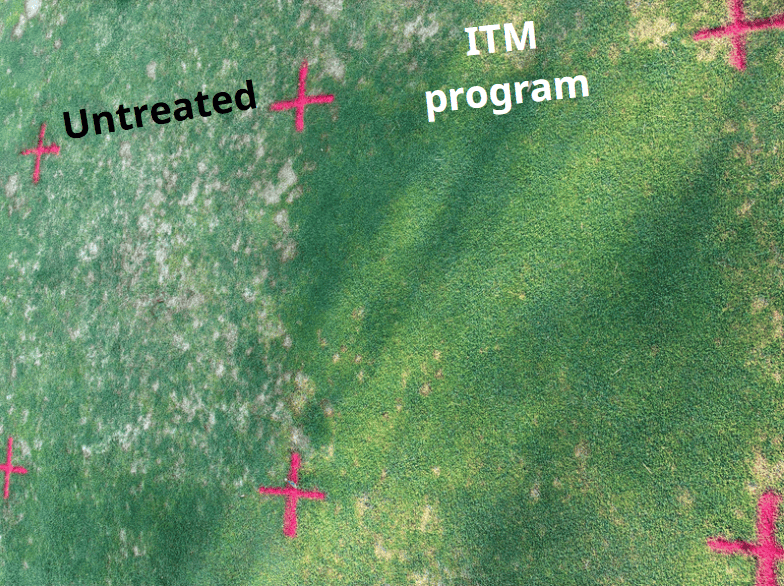With turf surfaces having experienced high heat and prolonged droughts this year, thoughts inevitably turn to “How will that impact the crane fly flight?”
A question I’ve been asked a lot and seen prevalent on social media.
Crane fly larvae need a level of moisture to be active in the soil.
In extreme dry periods larvae will burrow deeper into the profile and become inactive to conserve water.
In an attempt to out last the bad times. When the rains return, or irrigation comes on it’s back to the buffet table.

Not all larvae will have the strength to survive, and so the hope is for turf managers, we see the larvae populations drop in these years.
Temperature is the other factor for all insect life, the warmer it is the faster they can feed and grow, the cold really slows them down and again extreme cold pushes them deeper in the soil profile where they are more insulated.
Temperature is also the key driver in the timing of the adult flight.
It’s an amazing series of events really, all those larvae and pupae without communicating need to turn to adults and find a mate.

Go too soon and no one else is around, and you become a snack.
Too late and it will be too cold for your offspring to grow enough to survive the winter.
The autumn drop in temperature is the driving force, we don’t know the exact number in °C, or if it needs to be 1 hour or 3 days, but that’s the trigger for the flight to begin for those pupae which are ready.
Those who were delayed by cold, drought or high levels of competition are now racing against time to be ready.
Hence the peak flight window over a series of weeks, rather than just all in one night.
We were running PestTracker in the hot summers of 2020 and 2022 and the hoped for crane fly drop off didn’t materialise unfortunately.
Numbers were slightly down but the timings ended up being very similar.
So I would anticipate that the crane fly flight for 2025 go as they plan, with the big push at the end of September into October.
Whilst I predict that the number of leatherjackets which have survived this summer is down, the adults which make it have the ace of being able to lay hundreds of eggs to compensate.
For those needing control options, as always timing remains key!
Acelepryn applied around the 20th October
Nematrident within 7 days after that.
![]()
With record numbers having ordered early the Leatherjacket Total Approach Pack (LTAP) (order window is now closed sorry) – here’s a quick reminder of the time lines to come:
| Delivery of LTAP & NemaTrident F | 13th – 17th October |
| Acelepryn application timing | On or around 20th October |
| NemaTrident F application | Within one week; 23rd – 30th October |




